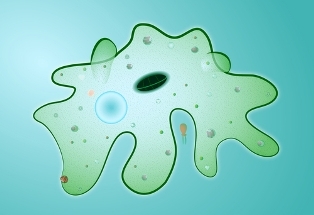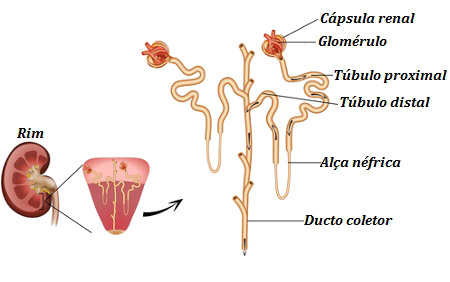In the text Periodic table was taught how this table is organized (in ascending order of atomic number), what information appear in the square of each chemical element and how the elements are classified into families (or groups) and periods.
Chemical elements can be classified in various ways in the Periodic Table, but now let's talk about the main one, which is a form that separates the elements into groups according to the properties and characteristics of the simple substances formed by them. Thus, the classification of chemical elements is in metals,ametalsand noble gases.
There are some Periodic Tables that also bring another group, the semimetals, which are elements that have some characteristics of metals and others of non-metals. But this classification in semimetals is outdated, it is no longer used. Elements that were from this group must be considered as metals or as non-metals, depending on which characteristic is being studied. However, for you to know more about these elements, we will talk a little about them as well.
Also, the hydrogen it is an element with characteristics totally different from all other chemical elements. Therefore, it is also considered separately from other groups.
See in the table below how these five groups are separated:

The classification of elements in the Periodic Table above is made into five groups, identified by different colors
Let's now talk about each of these groups:
* Metals: These are the majority of elements on the periodic table, with 87 in total.

Classification of metals on the periodic table
Do you remember the metals that you've had contact with on a daily basis? Think of copper in a nickel or copper in electrical wires. Also think of iron in screws, aluminum in soda cans, silver and gold in jewelry. All these cases, copper (Cu), iron (Fe), aluminum (Al), silver (Ag) and gold (Au), are examples of metals.
Have you ever noticed that they all have some similar characteristics? See what the properties of metals are:
- They have a tendency to lose electrons;
- They conduct heat well: Have you ever seen that an aluminum pan placed on a fire heats up quickly? If you put your hand on it, it will burn. This shows that these materials are heat conductors.
- They conduct electricity well: That's why copper is used in electricity wires;
- They are brilliant;
- They are solid: The only one that is not solid under ambient conditions is mercury (Hg). You can see that the mercury used in thermometers is liquid;
- They can be molded in the form of wires: This property is called ductibility. An example is the copper wires already mentioned;
- They can be molded in the form of thin sheets: This property is called malleability.
Metal properties
* Ametals: the “a” here means “no”, that is, they can also be called nonmetals, because their characteristics are totally different from those of metals.

Classification of non-metals on the periodic table
See its main features:
- They have a tendency to gain electrons;
- They are not good heat conductors: They are thermal insulators;
- They are not good conductors of electricity: The only exception is carbon, which, in the form of graphite, conducts electricity well;
- They are opaque: That means they don't have the metallic sheen;
- They are easily fragmented, that is, they fall apart, are brittle: This means they cannot be molded into wires or blades.

In the figure, we see from left to right chlorine, bromine and iodine, examples of non-metals from the 17* family
* Semimetals: There are seven elements (boron (B), silicon (Si), germanium (Ge), arsenic (As), antimony (Sb), tellurium (Te) and polonium (Po)). Usually boron, silicon, arsenic and tellurium are placed on the non-metals side, while germanium, antimony and polonium are considered metals.

Classification of semimetals on the periodic table
Its intermediate properties between metals and non-metals are:
- They have metallic shine;
- Practically do not conduct electricity;
- Fragment.
* Noble Gases: The elements of family 18 are:

Classification of noble gases in the periodic table
They are all gases in ambient conditions and are called noble because they are the only chemical elements that are found in nature alone. They are already stable, they don't need to bond with any other chemical elements, and they don't tend to donate or receive electrons.

Balloon being filled with helium gas
* Hydrogen: It appears in family 1 because it only has one electron, but it is not a metal, so it is classified separately. It is a gas found in the upper layers of the atmosphere. Can bond with metals, semi-metals or non-metals.

hydrogen is a gas
* Image with copyright credit: W. oelen / Wikimedia Commons / Science Made Alive: Chemistry/Elem – Halogens-.
By Jennifer Fogaça
Graduated in Chemistry


